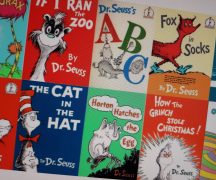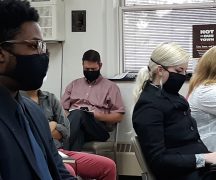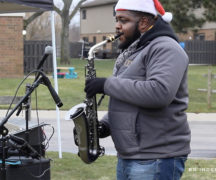By JAN LARSON McLAUGHLIN
BG Independent News
Being colorblind as a defense against racism is not only counterproductive, it’s just not possible. Bowling Green residents are being urged to be color brave instead.
The Bowling Green organization BRAVE (Black Rights, Activism, Visibility, Equity) held a panel discussion Friday evening on local law enforcement and the importance of diversity in the community.
On the panel were Greg Dickerson, a life design coach who has lived in Bowling Green since 1985; Police Sgt. Adam Skaff, who has lived here since 2002 and was recently made the police liaison to people of color; and Ana Brown, a member of Not In Our Town, who has lived in Bowling Green for more than 20 years.
Moderating the panel was Anthony King, founder and director of BRAVE.
Colorblindness was the first topic tackled
Brown told of a speaker who asked his audience to describe him. The crowd shouted out descriptive terms like tall, handsome, and having intelligent eyes. No one mentioned that he was black.
The speaker then asked how the audience would describe him to police if he had walked into the room, picked up someone’s purse and left. Would they still describe him as handsome, tall and having intelligent eyes – or as the big Black man who took a purse?
We all see skin color.
“It’s what you do with the information that matters,” Brown explained.
Skaff said being blind to color shows a lack of respect.
“To ignore it and be blind to it, I think you’re missing our different experiences,” he said.
Skaff questioned the theory that children aren’t prejudiced because they don’t see colors. Children see differences, he said, but don’t assign values based on colors.
It would be more helpful if people embraced each others’ differences, rather than ignore them, Dickerson said.
“It illuminates our differences and allows us to shine as individuals,” he said.
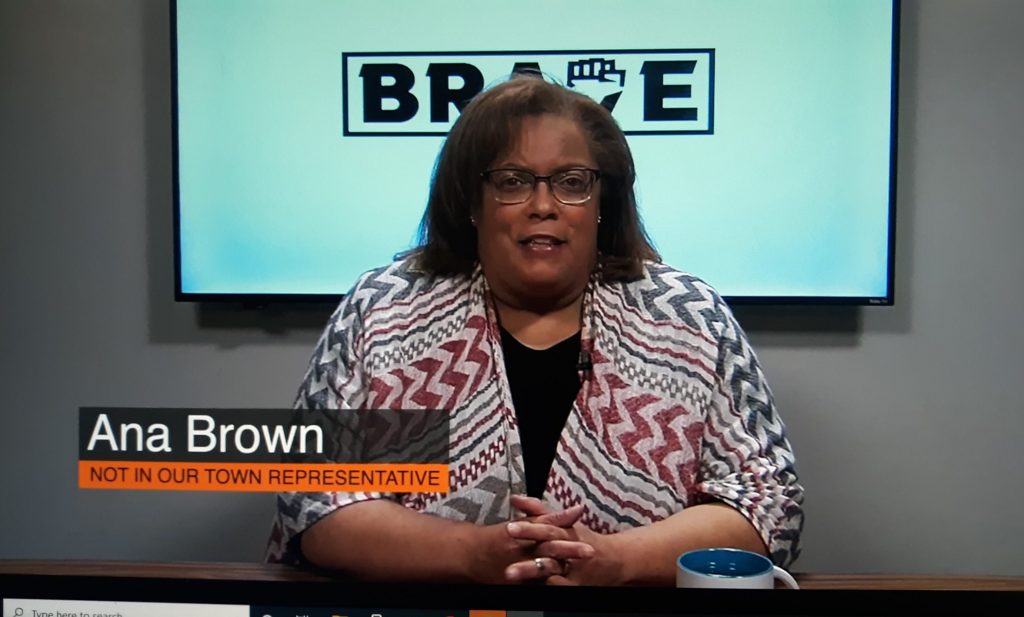
What’s the difference between diversity and inclusion?
Inclusion means people are feeling comfortable and welcome, Dickerson said. Diversity is meaningless if people don’t feel welcome, he said.
“Inclusion entails having your voice being heard,” and having that voice carry the same weight as others, Brown said.
“We want to make sure we’re making space at the table,” she said.
Skaff agreed.
“It’s easy to have a diverse group, but if people aren’t having the same experience, what’s the point?” he said.
How can schools include diversity in education?
Schools need to include different viewpoints and seek out different source materials, so students get a full picture, Brown said.
“There’s more than a single story” on many subject matters, she said.
Diversity in education needs to start early – to show children there are more similarities than differences among people of different races, religions, genders or sexuality.
“Starting in junior high and high school is too late,” Brown said.
“The earlier, the better,” Dickerson agreed.
Brown talked about growing up in Kenton, Ohio, a city of 8,000 people. She was among six students of color in her graduating class of 165.
“Everybody who was brown was either related to me or went to the same church,” she said.
It is critical for people to recognize different backgrounds.
“It was nothing for me to see confederate flags. It was nothing for me to hear racial slurs,” Brown said. “But what I grew up with isn’t necessarily the right way.”
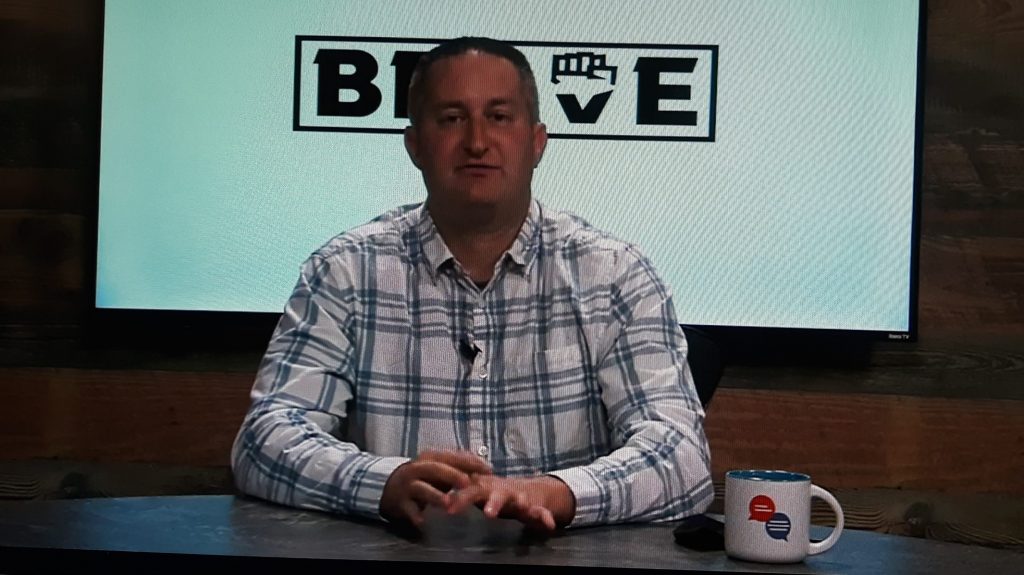
What does “defunding police” really mean?
Skaff acknowledged that the term doesn’t mean ending the funding for police operations.
“I look at it as a slogan with what is going on in the country right now,” he said.
The term means seeking reform, and redefining the responsibilities of police. “I think we’re open to that,” he said.
Skaff repeated the philosophy of BG Police Chief Tony Hetrick, that BGPD is not here to police the community, but to police for the community.
Police must be accountable for their actions, Skaff stressed, and BGPD is always working to be better.
“We want to be better trained. We want to make good decisions,” he said. “The last thing we want to do is use violence against someone,” or deny someone’s rights.
Brown agreed that “defunding police” does not mean abolishing law enforcement, but rather reallocating resources. Though BGPD appears to run a “tight ship,” Brown noted that not all police forces do so.
“There are police departments that have tanks. Why?” she asked.
Rather than making police deal with emergencies involving mental health issues, why not send mental health experts with police, Brown asked.
“That would be taking some of the burden our police departments carry that they really shouldn’t have to,” she said.
Skaff, who works the night shift, talked about the tools he has to carry on his belt – a firearm, gloves, masks for CPR, baton, taser, tourniquet, and narcan to revive overdoses.
He understands the desire to reassign some of those responsibilities, but for right now, the police are depended upon to respond day or night. “We are there 24/7,” he said.
Value of police liaison to communities of color
Police need to be respectful – not colorblind, Dickerson said.
“I want the police to see me as an African-American man, to see me for who I am,” he said. “As a person who is part of the community. As a Black person, I want to feel respected.”
As one of his liaison roles, Skaff is the point of contact for people of color who aren’t comfortable reaching out to police.
“I want to break down some of the barriers that exist between some groups and the police,” he said.
“I believe we do a pretty good job. That’s not to say we can’t improve,” he said of BGPD.
Becoming liaison has been an eye-opening experience for Skaff, who quickly learned that not all people have had the same positive experience living in Bowling Green.
“We need to do more than listen and learn,” Skaff said he was advised by police leadership. The work also requires the division to take action where it can.
“We’re committed to changing where it’s necessary,” he said.
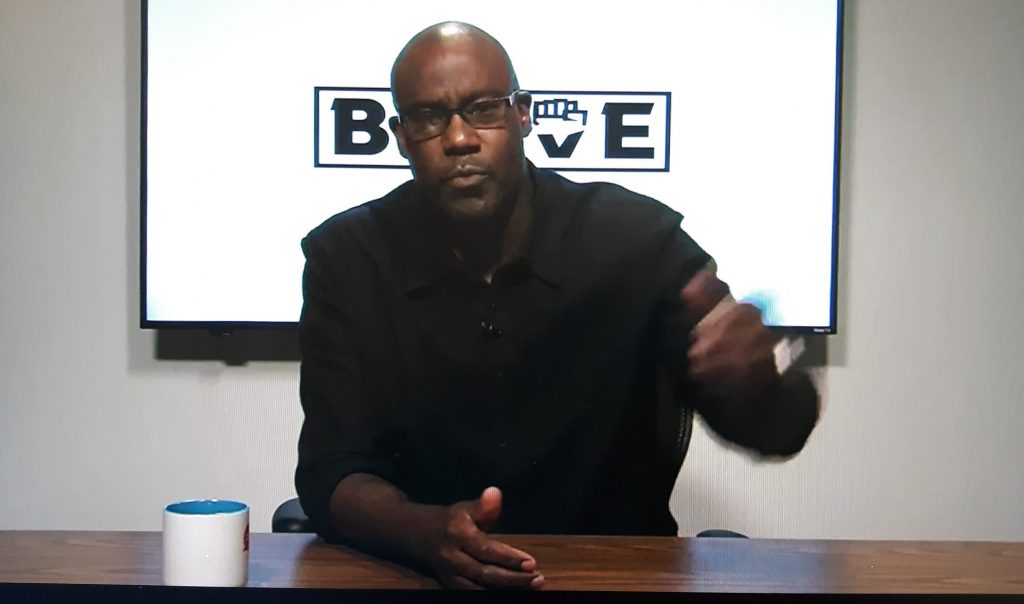
Nationwide, how can law enforcement do better to protect the Black community against police brutality?
“Training is critical,” said Dickerson, who has a degree in law enforcement and worked in policing for a few years.
And that training should not focus on policing out of fear.
Skaff said BGPD requires officers to complete a psychological assessment, education, academy training, then annual and quarterly training.
It’s important for officers to have a “guardian mentality,” not a “warrior mentality,” he said.
“Our goal is to use force as an absolute last resort,” Skaff said.
Brown said officers need exposure to people who are different from them.
“We have to get people out of their silos,” so they don’t see people of color as the stereotypes on TV, she said.
Once people of color are seen as people, rather than stereotypes, then the issue of systemic racism can be addressed.
“It’s steeped in our society. It happens in our everyday activities,” so often over the past century that it often goes unnoticed, Brown said.
More panel discussions are planned by BRAVE for the Bowling Green community.


